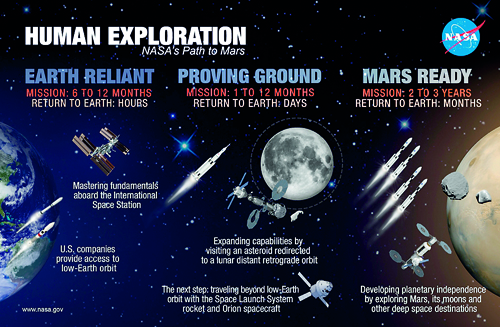Sunday Times 2
Countdown to Mars
The spacecraft it is hoped will take man to Mars has passed its first parachute tests with flying colours.
Nasa’s Orion spacecraft landed gently using its parachutes after being shoved out of a military jet at 35,000 feet.
It is hoped the craft will take astronauts to an asteroid in 2018, before eventually helping ferry man to Mars.

The Orion crew module for Exploration Flight Test-1 going through final preparations. In December, Orion will launch 3,600 miles into space in a four-hour flight to test the systems that will be critical for survival in future human missions to deep space (NASA)
The test version of Orion touched down safely in the Arizona desert after being pulled out of a C-17 aircraft, 35,000 feet above the U.S. Army’s Yuma Proving Ground. It was the first time some parachutes in the system had been tested at such a high altitude.
Engineers also put additional stresses on the parachutes by allowing the test version of Orion to free fall for 10 seconds, which increased the vehicle’s speed and aerodynamic pressure.
‘We’ve put the parachutes through their paces in ground and airdrop testing in just about every conceivable way before we begin sending them into space on Exploration Flight Test (EFT)-1 before the year’s done,’ said Orion Program Manager Mark Geyer.
‘The series of tests has proven the system and will help ensure crew and mission safety for our astronauts in the future.’
After Orion’s free fall, its forward bay cover parachutes deployed, pulling away the spacecraft’s forward bay cover, which is critical to the rest of the system performing as needed.
The parachutes that slow Orion to a safe landing speed are located under the cover, so the cover must be jettisoned before they can be unfurled.
 During the flight, an uncrewed Orion will travel 3,600 miles into space, farther than any spacecraft built to carry humans has been in more than 40 years.
During the flight, an uncrewed Orion will travel 3,600 miles into space, farther than any spacecraft built to carry humans has been in more than 40 years.
Orion will travel at the speed necessary to test many of the systems critical to NASA’s ability to bring astronauts home safely from missions to deep space, including an asteroid and eventually Mars.
During its return to Earth, Orion will reach a speed of up to 20,000 mph and experience temperatures near 4,000 degrees Fahrenheit.
Once Orion has made it through the atmosphere, the parachute system, with two drogue parachutes and three massive main parachutes that together cover almost an entire football field will be responsible for slowing it down to just 20 mph for a safe splashdown in the Pacific Ocean.
Earlier this months, engineers began stacking the crew module on top of the completed service module, the first step in moving the three primary Orion elements -crew module, service module and launch abort system – into the correct configuration for launch.
‘Now that we’re getting so close to launch, the spacecraft completion work is visible every day,’ said Mark Geyer, NASA’s Orion Program manager.
‘Orion’s flight test will provide us with important data that will help us test out systems and further refine the design so we can safely send humans far into the solar system to uncover new scientific discoveries on future missions.’
With the crew module now in place, the engineers will secure it and make the necessary power connections between to the service module over the course of the week.
Orion is being prepared for its first launch later this year, an uncrewed flight that will take it 3,600 miles above Earth, in a 4.5 hour mission to test the systems critical for future human missions to deep space.
After two orbits, Orion will re-enter Earth’s atmosphere at almost 20,000 miles per hour before its parachute system deploys to slow the spacecraft for a splashdown in the Pacific Ocean.
© Daily Mail, London

